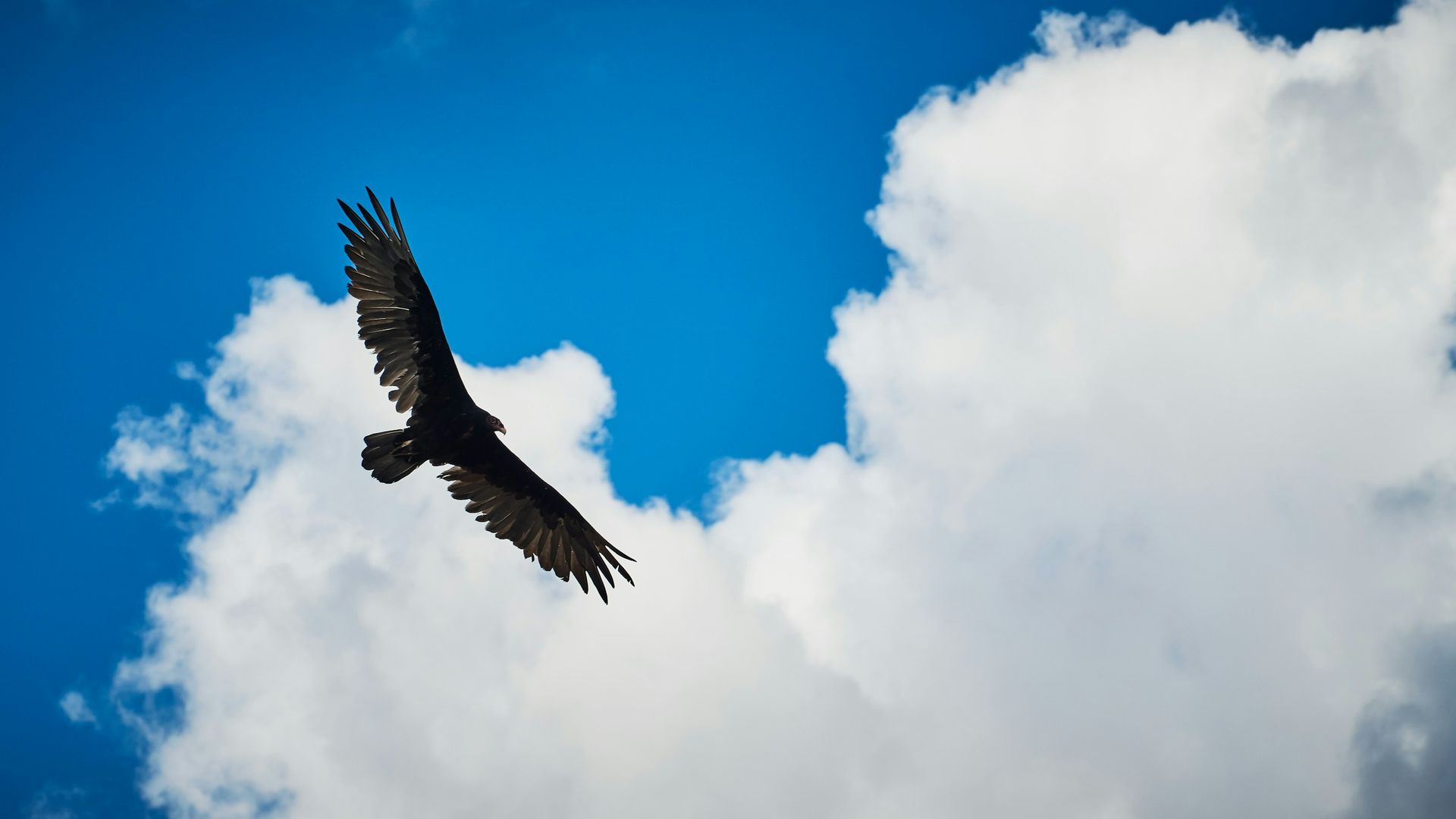Vultures are large, scavenging birds of prey known for their bald heads, broad wings, and essential role in ecosystems as nature’s cleanup crew. Found on nearly every continent, vultures thrive in a variety of habitats, including deserts, grasslands, and forests. They help prevent the spread of disease by consuming carrion and recycling nutrients back into the environment.
Most vultures measure 24-40 inches in length with wingspans of up to 10 feet, depending on the species. Their plumage is typically black or brown, with bare skin on their heads and necks to reduce bacterial buildup when feeding. Common species in North America include the Turkey Vulture and the Black Vulture.
Vultures are highly social and often forage and roost in large groups. They have an extraordinary sense of smell (in the case of Turkey Vultures) or keen eyesight (in Black Vultures) to locate carrion from great distances. Vultures do not build nests but lay their eggs in caves, hollow trees, or abandoned structures. Both parents care for the chicks until they fledge.
Natural predators of vultures are rare due to their size and diet, but human-related threats such as habitat loss, poisoning, and collisions with vehicles or power lines pose significant risks.

For your safety and the well-being of wildlife, please observe animals from a distance and avoid touching or disturbing them. If you encounter an animal that appears injured or in distress, contact a licensed wildlife rescue organization for guidance before intervening.
Found An Animal? Not sure how to help a wild animal in need? Learn when to step in, who to call, and how to help safely.
Did You Know?
- Turkey Vultures can detect carrion from over a mile away using their keen sense of smell.
- Vultures play a critical role in preventing the spread of diseases like anthrax and rabies.
- Unlike most birds, vultures urinate on their legs to cool down and disinfect their skin.
- Vultures can soar for hours without flapping their wings, using thermal updrafts to conserve energy.
- Black Vultures are more aggressive and often follow Turkey Vultures to carrion, displacing them.
- Vulture stomachs are highly acidic, allowing them to digest rotting meat that would be lethal to most animals.
- In some cultures, vultures are considered symbols of renewal and purification.
- Vultures have excellent vision and can spot potential food sources from thousands of feet in the air.
- Young vultures hiss and grunt to communicate with their parents and ward off threats.
Problems Faced In The Wild
- Poisoning: Secondary poisoning from lead ammunition and toxins in carcasses is a significant threat.
- Vehicle Collisions: Feeding on roadkill makes vultures vulnerable to traffic accidents.
- Habitat Loss: Urban development reduces suitable roosting and nesting sites.
- Power Line Collisions: Large wingspans increase the risk of electrocution.
- Climate Change: Altered weather patterns can affect food availability.
- Human Disturbance: Recreational activities can disrupt roosting and nesting areas.
Tips For Cohabitation
- Use Non-Lead Ammunition: Reduce the risk of poisoning by using non-toxic alternatives.
- Respect Roosting Sites: Avoid disturbing vultures when they are roosting or nesting.
- Dispose of Carcasses Safely: Prevent accidental poisoning by managing livestock carcasses properly.
- Support Open Spaces: Preserve natural areas that provide habitat for vultures.
- Educate Others: Share the importance of vultures in maintaining healthy ecosystems.
- Participate in Conservation Programs: Support efforts to protect and monitor vulture populations.



